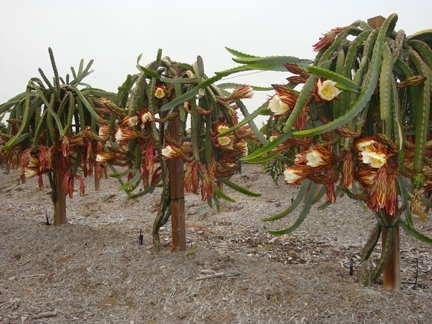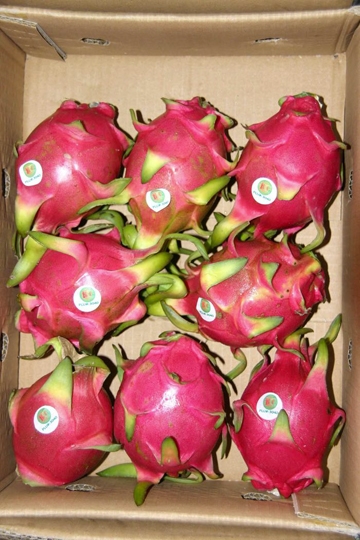
Pitahaya is a vining cactus that adapts very well to arid southern California micro-climates and can survive with minimal amounts of water. Its fruit is highly prized by Southeast Asian consumers not only as a fresh fruit but also for its cultural importance. However, market trends and increasing demand for new, exotic and more nutritious fruits have increased the appeal of this fruit among mainstream American consumers and the demand currently exceeds the domestic supply.

Recognizing that more research-based information and tastier, more colorful varieties were needed to increase consumer demand and to help growers capitalize on this opportunity, UCCE Small Farm Advisor Ramiro Lobo initiated a pitahaya research and extension program with seed money from the former UC Small Farm Program. Subsequent grants from UC-ANR and from the UC Hansen Trust have allowed Farm Advisor Lobo to expand the geographic scope of this program into Riverside and Ventura Counties in collaboration with Jose Fernandez de Soto, Jose Aguiar, other Advisors and Specialists from UC Davis and UC Riverside and private growers and suppliers.
Research efforts to date have focused on the evaluation of pitahaya cultivars for adaptation to local micro-climates, the genetic characterization of a pitahaya germplasm collection, pest and disease management, irrigation and fertility management and post harvest management information. This research has demonstrated that pitahaya or dragon fruit adapts very well to field grown conditions in Southern California and that this drought-tolerant plant can be a profitable crop alternative for small-scale producers in Southern Coastal California.
Pitahaya production seminar and research field days are scheduled for Ventura County on September 29, 2015 and Riverside County on September 30th
If you are interested in learning more about pitahaya, you may want to attend one of these upcoming events. The Field Day in Ventura County will begin with a tour of field research trials at MVP Farms in Fillmore, followed by 
http://ucanr.edu/pitahayafielday-ventura
A shorter program in Indio, Riverside County will be presented on Wednesday, September 30 beginning at 10:30AM. To register for this event, contact Wendy Smith at 760 342 6437 or wensmith@ucanr.edu.
